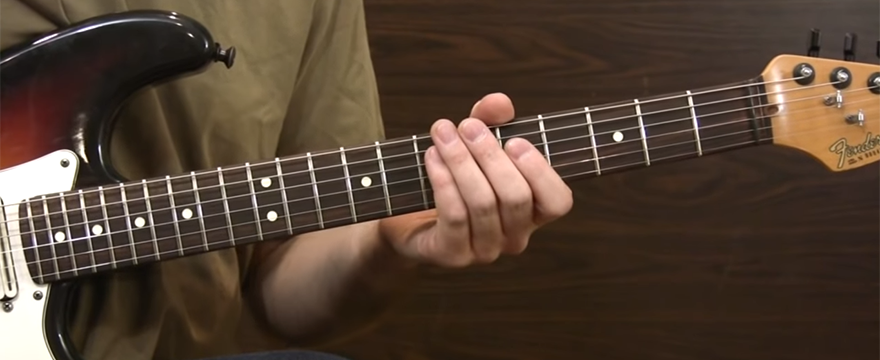Learning to play your own original music, (the ideas that you can hear in your mind), will require a specialized study approach. This lesson explains how to get started with tapping your mind for simple musical ideas. I explain song practice and how to begin building a study routine for playing the music you hear in your head…
Q: I’m a new subscriber and have to start by saying a huge thanks for your efforts, you have awesome lessons! I am really struggling with the ability to play what I hear in my head. I’m fine with a sheet of tab in front of me, but I am terrible at learning anything from a recording, or playing anything melodic off the cuff. I have been learning my scales, doing picking technique and speed drills, but why can’t I transcribe and just find the simplest of things I hear in my head on my guitar neck? I am getting really down in the dumps about this, because I know how important it is to do this instinctively as a guitarist. I’ve asked a lot of online guitar guru’s this question, but none have given me a good answer — Andrew, if there’s anyone who I think can help me out there — I’ll bet it’s going to be you! Thanks in advance.
– Michael, Las Vegas NV.
A: Far too many guitar players will choose to focus a majority of their time and effort on mastering playing technique while sadly neglecting the benefits of developing a solid ability to hear and then play the music they hear in their head.
Of course, there are a lot of benefits from having good hand technique, but the technique that is most often overlooked is the skill of being able to play what you hear in your head.
That skill is an incredibly important part of learning music and becoming a great musician. And, it is also why an equal balance must always be pursued between these two areas of music study, (Technique and Ear Training).
When a musical idea comes to you, it is valuable to work very hard at getting the idea out of your head and onto the guitar fingerboard.
If you want to become a good improviser, (so good that you have the total enjoyment of thinking or hearing of a musical idea and then playing the idea unrehearsed), then the the skill of being able to play what you hear in your head is an absolute must.
So, how does a musician in training do this?
It all comes down to rehearsal and daily self-testing. If you do the work; you’ll get it. But, if you don’t do the work – you won’t gain the skill.
GETTING STARTED:
The study of ear training requires three components, and they are playing, listening and singing. If you miss one of these areas your skills will remain weak.
These three components are the foundation to developing a great ear for music, if you build upon all of them, your ability to start playing what you hear in your head will evolve quite rapidly.
TAP YOUR MIND – PLAY SIMPLE IDEAS:
Use the collection of eight MP3’s (contained in this lessons download) to help with learning each of the lessons simple melody lines.
The lesson plan consists of an eight day structure that will help with gaining a better understanding of both hearing and performing common melody lines.
Once you are able to train yourself to hear simple melody lines, it will become easier to learn any piece of music by ear. Plus, it will also be easier to tap into the melodies that you hear in your head.
SONG PRACTICE:
Once you develop some skill for performing simple melodies (melodies that are popular in the public sphere), the next step is to move into doing this type of practice with your favorite songs.
On page 3, (Section Two) of your handout, there is a breakdown of a good exercise that directly relates to song practice.
Start slowly and learn small sections of songs. The use of a DAW (Digital Audio Workstation) is highly recommended.
NOTE: Compared to the standard audio players found on your computer, more advanced audio programs like Garage Band or Reaper will allow for greater control over the audio files that you are studying.
CONCLUSION:
Learning to hear the music that you have living in your head requires building a connection to how sound physically relates to a musical instrument.
You can have all of the music theory training in the world, but if you do not have the mental and physical connection of sound, (scales, arpeggios, intervals) to your instrument, it is quite likely that you’ll never be able to release it out to the world.
Spend time learning the exercises that I’ve included within this lesson. Then, work some more by following similar principles of study with more music.
This type of practice is critical, because the more music that you learn written by other artists, the greater the connection you will build to the music that is waiting to come to life in your own mind.
Every great songwriter from the Beatles to Elton John spent the early period of their musical life learning to play popular songs that were written by other musicians.
They learned early on that song practice was one of the most valuable forms of study when it came to organizing and composing all of the music that they heard in their own mind.
- Click the button below to download the lesson handout
(access to lesson material will require a FREE membership)
